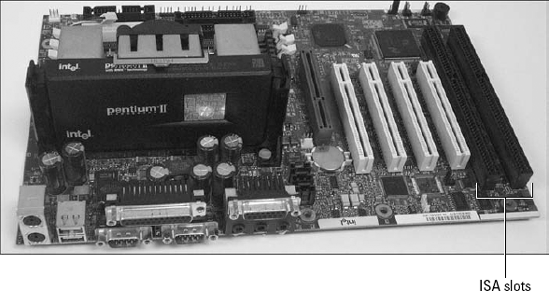1.3. Understanding Bus Architectures
The motherboard has a number of expansion slots that can expand the computer's capabilities. When the system is first purchased, a computer has only so many capabilities. The nice thing is that you can expand on those capabilities by purchasing cards to add to the expansion slots, or bus slots.
Expansion slots, um, expand what the computer can do. The problem is that there are different types of expansion slots in the system, so when you purchase a sound card or network card, you have to make sure you get the right type. In the following sections, I show you the different types of expansion slots and also compare their characteristics.
NOTE
Another term for the expansion slots is bus slots. A number of different bus architectures have been developed over time. You need to be able to identify the differences between each of these architectures and also to know which ones are more popular today.
1.3.1. ISA
The Industry Standard Architecture (ISA) was the first major expansion bus architecture. It was originally developed as an 8-bit architecture and then evolved into a 16-bit architecture. The ISA bus architecture has a speed of 8 MHz, which is extremely slow by today's standards. Figure 1-36 shows two 16-bit ISA slots; note that the ISA slots are the black slots in the system.
Figure 1.36. Identifying ISA slots on the system.

One of the reasons ...
Get CompTIA A+® Certification All-In-One For Dummies®, 2nd Edition now with the O’Reilly learning platform.
O’Reilly members experience books, live events, courses curated by job role, and more from O’Reilly and nearly 200 top publishers.

